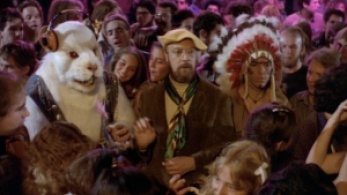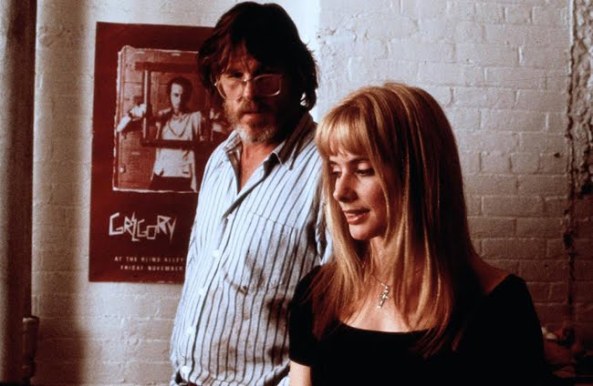I wonder if people think “House of Flying Daggers” has aged well. Zhang Yimou’s martial arts epic was universally heralded upon its 2004 release, being championed for its color, its visual style and its operatic approach to both its story and its action set pieces. It arrived just a few years after the high created by “Crouching Tiger, Hidden Dragon,” and it was a colorful counterpoint to movies that were beginning to amplify the “action extravaganza” style of intense, CGI filled action filmmaking. Of course it was adored.
I personally found it to have horribly wooden acting, a flimsy, over the top plot and gimmicky magical conveniences, but that seems not to be the point for debate in a movie such as this. The question is, is “House of Flying Daggers” a good looking movie?
“Daggers” is a wonderful example of a film I tend to see a lot these days and see championed by some filmmaker friends, amongst others; it is very pretty, but it is not necessarily well-shot.
Everything in the film is perfectly crisp, the colors pop with alacrity on my Blu-Ray version, and the sets and costumes are done up with precision.
But Yimou’s idea of a good looking shot tends to be a lone warrior standing in the center of the frame in deep focus surrounded by trees or flowers or soldiers stretching to infinity. Yimou shoots wide shots as though he was David Lean, but faces and bodies are always placed smack dab in the middle with little nuance or variation in between. A sequence in a vast field of flowers is so overly stylized that to just look at it suggests a Hallmark cliche. In another scene near the Flying Daggers hideout, the color green is so overly prominent as to be shouting at us. Roger Ebert used the term “oversaturated, wide-angle Wacky-scope” in his review of Yimou’s “A Woman, a Gun and a Noodle Shop.” I can’t be certain what that means, but I think it fits here as well.
This in my view also hurts the much lauded fight scenes. Scenes are shot with full-bodied glimpses of these fighters for sure, but “Daggers” lacks the economy of “Crouching Tiger,” and the numerous shots of daggers striking trees, nuts bouncing off drums and feet colliding with jaws do not add up to as perfectly seamless a sequence as it initially appears. The camera performs unnatural feats, including aerial flips and spins, that disorient the flow as well, and too often Yimou holds onto the crutch of creating a circle of death in which its heroes are trapped, only to fight till near death and be saved by daggers, arrows and bamboo spears that fly miles through the air and make left turns.
Again, all this might matter less to me if the story was solid, but for as much ethereal beauty as “Daggers” has, it has almost none of the poetry of “Crouching Tiger.” The “wind” analogy is used so often throughout the film that Yimou struggles to find something new and meaningful to say instead.
“Daggers” is good for a few laughs, especially at the expense of magic, but the film lacks some of the filmmaker magic compared to other directors’ films and his own.


